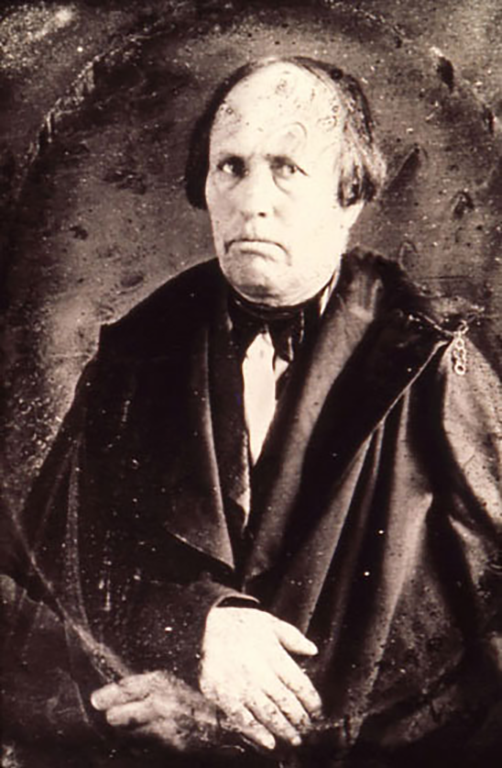Padre Antonio José Martínez was one of the most well-known public figures in New Mexico during this period of transition. Born in Abiquiú to a prominent family, Martínez came of age in the late-colonial era of cultural blossoming. While he was still a child, the family relocated to Taos where their large hacienda became a local landmark. Constructed with thick walls to prevent against the possibility, however diminished, of native attacks, the Martínez Hacienda was known to all locals.

Courtesy of Wikimedia Commons
Tragedy struck when Martínez’s young wife died during childbirth less than a year after their marriage in 1811. At the age of nineteen, he remained a widower with a daughter named María de la Luz after her mother. After a few more years serving as administrator over his family’s ranching affairs, in 1817 Martínez made the momentous decision to enter the clergy at the Durango seminary. During his tenure there, the seminary ranked among the best in Mexico. Along with ecclesiastical training, Martínez and his peers read and learned the ideals of liberalism and federalism. Padre Martínez’s preparation for the clergy also shaped his political outlook and sense of national pride.
Martínez later served as the parish priest in Taos, a position he used to further the education and wellbeing of his fellow nuevomexicanos. After the tragic loss of his daughter in 1824, he became extremely active in northern New Mexican public life, serving as priest, teacher, publisher, rancher, and minor politician. He used his position to advocate for a Mexican society based on the ideals of Hidalgo and Morelos. Despite vilification during their lifetimes, both became heroes of the independence era to Federalists and they continue to personify Mexican Independence today. The national independence holiday is celebrated annually on September 16, the date in 1810 upon which Hidalgo led the Grito de Dolores. On September 16, 1832, Padre Martínez delivered a laudatory speech in honor of Hidalgo in which he honored the father of independence and advocated for liberty.